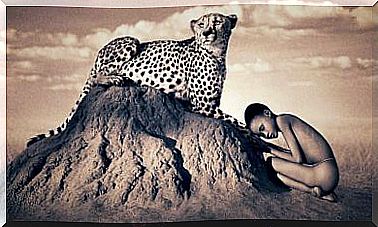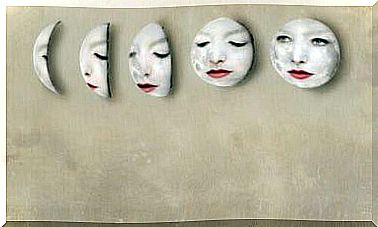4 Basic Steps To Start Meditating
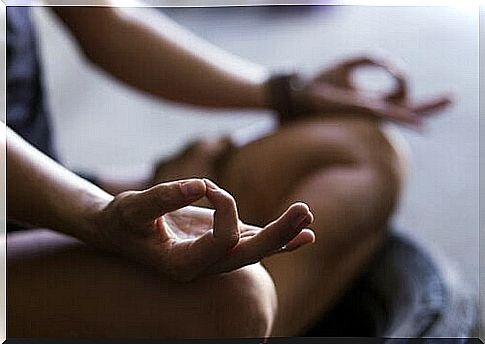
Conscious attention, meditation, full attention, mindfulness or Sati (as it is designated in Pali), is a practice by which we become aware of the distinct facets of our present experience. In this sense, starting to meditate is an opportunity to be aware of how we move, feel (physically and emotionally) and respond to each situation.
Such a quality of consciousness is the basis of any creative life: it allows us to be honest, pragmatic, alert, courageous and to have initiative.
In many moments of the day, perhaps too many, we stop paying attention to what is happening around us to devote most of our mental resources to our thoughts, be they problems or ambitions. Similarly, we activate the autopilot and disconnect. We get dressed, shower or have breakfast thinking about work, thus starting our work day long before turning on the computer or getting the necessary tools.
How can we start meditating?
There are numerous paths to start meditating and reach a state in which everything flows and our attention is fully focused on what is happening in the present, inside and outside of us. One of the best known and most practiced is that of mindfulness which can be developed in four steps:
- Full attention : it is about concentrating (without judging, defining or interpreting) on what is happening around us at a precise moment. The sounds we perceive, the objects we see, the touch we feel, etc. Simply observe.
- Relating to one’s thoughts and feelings : by concentrating on what is happening around us, thoughts and emotions will arise that we will let flow by becoming aware and accepting them.
- Living the here and now : the present is lived by carrying out daily activities with full awareness.
- Develop Compassion : Compassion begins with loving yourself and then gives affection to loved ones and the rest of the world, mere acquaintances or even enemies.
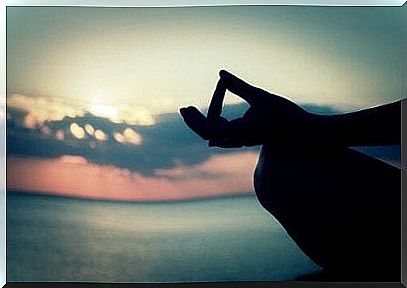
The mindfulness technique is a preparation process very similar to that of other procedures involving meditation. This is so because everyone is looking for a very specific condition: the awakening of attention and a state of bodily relaxation.
Below we describe the central ideas of this process that will help us start meditating.
Body scan
The first idea is to relax the body. For this purpose, we can use conscious breathing and a technique that takes the name of “body scan” or body review. The body scan is about exploring and noticing your body. We start from the feet and go over the various areas.
We observe with curiosity the sensations we receive from each area we focus on. The body scan can be extended from 5 to 20 minutes. Once this bodily reading is done, the meditative process focuses on the present moment, letting the mind arise what it needs to work on. We will therefore acquire the position of observers.
Focus on the present moment
This focus on the present can take place through exercises of attention to an object (any object, just observe it) to sounds (listening to all the sounds that we certainly do not perceive when we are not in this state of attention) and to physical sensations (what we feel in the body).
Avoid judging and interpreting
Attention to the mind and emotions from the observer’s perspective involves receiving what our inner world wishes to show us. Avoid interpreting and judging. Everything that happens inside us is normal and represents a lesson about ourselves.
This practice develops towards tonglen and metta . Tonglen and metta refer to compassion for ourselves and others. In this way, we move towards forgiveness, gratification, appreciation and compassion for what we possess and for others.

Practical exercises to start meditating
To start meditating, you need to pay attention to several variables: breathing, senses, body, mind and daily activities. The exercises to be developed starting from mindfulness can be classified into five groups:
- Observation of present experiences: living life as if looking at a painting, observing its specific details, with a smile if possible.
- Handling Thoughts : It is about welcoming all visitors to our mind.
- Actions of full conscience: carry out the activities one by one and focus on what we are doing by slowing down the pace, for example.
- Acceptance and detachment : we accept that everything is in constant change and transformation, that nothing is immutable.
- Compassion and self-compassion : Let us treat ourselves as if we were the compassionate mother of a child, thinking that it will all pass.
Observation of present experiences
One of the most famous exercises in this sense is that of raisins. With a raisin in hand, let’s observe its shape, texture, color, smell, etc. Once explored, let’s eat it slowly, collecting impressions even while we keep it in our mouth. In this way, we focus our attention on the present experience of observing and eating raisins.
Another exercise we can use to meditate is that of STOP and RAIN, which correspond to the following English acronyms:
- S / Stop, (stop)
- T / Take a breath
- O / Observe (observe what you think, feel and do)
- P / Proceed (participate and act consciously)
- R / Recognize (recognize the experience)
- A / Allow (allow and accept it)
- I / Investigate (investigate experience)
- N / Non-Identification (do not identify yourself)
Management of thoughts
To manage thoughts, we can do the following exercises:
- Labeling thoughts : it’s about naming the ideas that arise during the process.
- Hour of the centrifuged : giving a determined and agreed time to our thoughts; for example, one hour in the morning.
- My discussion with Socrates : It consists in questioning everything we accept, thus identifying all the thoughts adopted without reflecting on them.
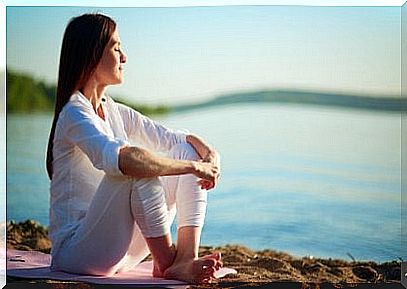
Actions of full conscience
It involves recording on a sheet the activity we are carrying out, the degree of actual presence of this activity (0-100) and what other activities we do in the meantime. In this way, we will become aware of the attention we pay to what was happening or what we were doing at that moment.
Acceptance and posting
You can develop them through Dave Bruno’s 100 Things Challenge (2008). It consists in getting rid of things, as it is more useful to collect moments than objects. In this way, we will practice detachment from goods, but also from relationships that can be harmful.
Compassion and self-compassion
The practice of compassion can be done in the following way:
- Morning Ritual : Upon awakening we will repeat the following to ourselves: “Today I feel lucky to have woken up, I am alive and have a precious human life and I will not waste it. I will use all my energies to develop, to expand my heart to others, to achieve enlightenment for the benefit of all living beings. I will have positive thoughts about others, I will not get angry and I will not think badly of others. I will do good to others as much as I can ”.
- Similarities with others: it consists in ignoring the differences – which we often emphasize – and finding the similarities. We must think that we all want the same: happiness, avoiding suffering, sadness, loneliness and despair. We also try to fulfill personal needs and learn from life and, from this point, we try to get closer.
These are the reference exercises for any person who wants to start meditating. As you can see, they are very simple, especially when compared with all the well-being that their practice can offer us.

